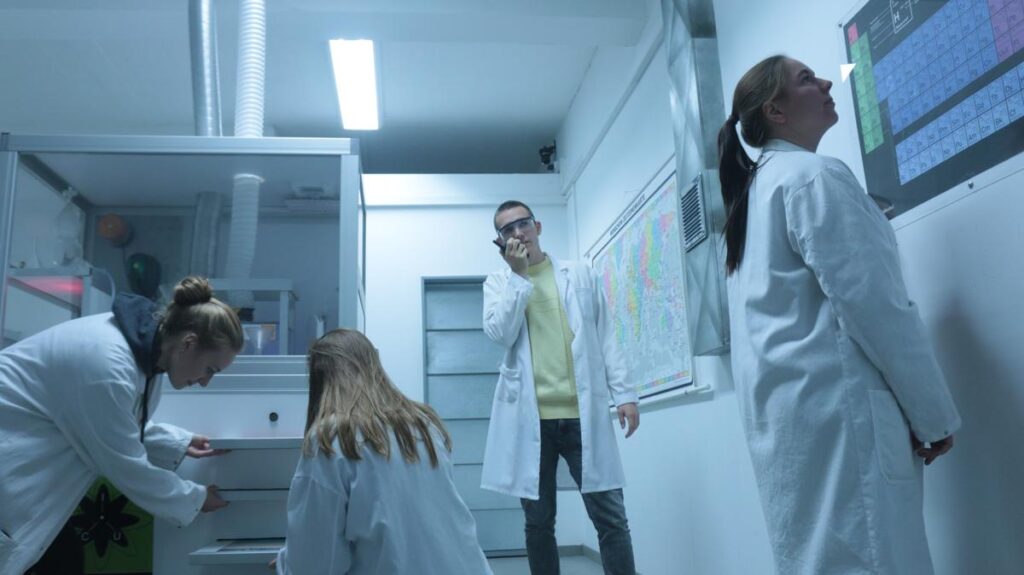Concrete is one of the most widely used construction materials in the world, known for its strength, durability, and versatility. However, traditional concreting practices have significant environmental impacts, primarily due to the production of cement, which is a key ingredient in concrete. The cement industry alone is responsible for about 8% of global carbon dioxide (CO2) emissions.
As the world shifts towards more sustainable practices, the concreting industry is exploring various methods to reduce its environmental footprint. As Dylan Sprecaks, a concreter from Brisbane, notes, “Incorporating sustainable practices in concreting isn’t just about reducing environmental impact—it’s also about improving the quality and longevity of the structures we build. Sustainable concreting is the future of construction.”
The Environmental Impact of Traditional Concrete
Carbon Emissions
The production of Portland cement, the most common type of cement used in concrete, involves heating limestone and other materials to high temperatures in a kiln. This process releases a significant amount of CO2, both from the chemical reactions and the fuel burned to reach the necessary temperatures.
Resource Depletion
Concrete production requires large amounts of natural resources, including sand, gravel, and water. The extraction of these materials can lead to habitat destruction, water shortages, and other ecological disturbances.
Waste Generation
Concrete construction and demolition generate substantial waste. Often, demolished concrete ends up in landfills, contributing to waste management issues.
Sustainable Alternatives and Innovations
Supplementary Cementitious Materials (SCMs)
SCMs are materials that can partially replace Portland cement in concrete, reducing CO2 emissions and resource usage. Common SCMs include:
- Fly Ash: A byproduct of coal combustion in power plants.
- Slag Cement: Produced from the byproduct of steel manufacturing.
- Silica Fume: A byproduct of silicon and ferrosilicon alloy production.
These materials not only reduce the need for Portland cement but also enhance concrete’s durability and performance.
Recycled Aggregates
Using recycled aggregates from demolished concrete or other construction waste reduces the need for virgin materials and decreases landfill waste. Recycled aggregates can be processed and reused in new concrete mixtures, maintaining structural integrity and performance.
Low-Carbon and Carbon-Neutral Concrete
Innovations in cement production and concrete formulations aim to lower or neutralize carbon emissions. These include:
- Geopolymer Concrete: Uses industrial waste materials like fly ash and slag, activated with alkaline solutions, to form a binding material.
- CarbonCure Technology: Injects captured CO2 into fresh concrete, where it chemically reacts to form calcium carbonate, enhancing the concrete’s strength and permanently storing the CO2.
- Bio-Concrete: Incorporates bacteria that precipitate calcium carbonate, filling cracks and reducing maintenance needs.
Advanced Admixtures
Admixtures are materials added to concrete to modify its properties. Advanced admixtures can improve workability, strength, and durability while reducing water and cement requirements. Examples include superplasticizers, which enhance fluidity without extra water, and pozzolanic materials, which improve long-term strength and durability.
Sustainable Construction Practices
Efficient Design and Construction Techniques
Optimizing concrete mix designs to use less material without compromising performance can significantly reduce environmental impacts. Techniques such as high-performance concrete (HPC) and ultra-high-performance concrete (UHPC) allow for thinner, lighter structures with superior strength and durability.
Prefabrication and Modular Construction
Prefabricated concrete components are produced in controlled environments, reducing waste and improving quality. Modular construction methods, where buildings are assembled from prefabricated modules, also reduce construction time and on-site waste.
Life Cycle Assessment (LCA)
LCA is a method used to evaluate the environmental impacts of a product throughout its life cycle, from raw material extraction to disposal. Implementing LCA in concrete construction helps identify areas for improvement and supports decision-making for sustainable practices.
Case Studies and Real-World Applications
Green Building Certifications
Green building certifications, such as LEED (Leadership in Energy and Environmental Design) and BREEAM (Building Research Establishment Environmental Assessment Method), promote sustainable construction practices, including those related to concrete. Certified buildings often use high-performance concrete, recycled materials, and innovative technologies to reduce their environmental footprint.
Sustainable Infrastructure Projects
Several infrastructure projects worldwide have embraced sustainable concreting practices. Examples include:
- The Pearl River Tower in Guangzhou, China: Utilizes high-performance concrete to achieve energy efficiency and sustainability goals.
- The One World Trade Center in New York City, USA: Incorporates recycled materials and advanced concrete formulations to enhance sustainability.
Challenges and Future Directions
Economic and Technical Barriers
While sustainable concreting practices offer numerous benefits, they also face challenges such as higher initial costs, lack of standardized guidelines, and technical complexities. Overcoming these barriers requires collaboration among industry stakeholders, continued research, and supportive policies.
Innovation and Research
Ongoing research into new materials, technologies, and methods is crucial for advancing sustainability in concreting. Areas of focus include the development of more efficient SCMs, carbon capture and utilization technologies, and bio-based materials.
Policy and Regulation
Government policies and regulations play a significant role in promoting sustainable concreting practices. Incentives for using green technologies, stricter emissions standards, and support for research and development can drive the adoption of sustainable practices in the industry.
Conclusion
Sustainability in concreting is an essential component of the broader effort to mitigate climate change and reduce environmental impacts. By adopting innovative materials, advanced technologies, and efficient practices, the concreting industry can significantly reduce its ecological footprint. While challenges remain, the continued commitment to sustainability promises a greener and more resilient built environment for future generations.






